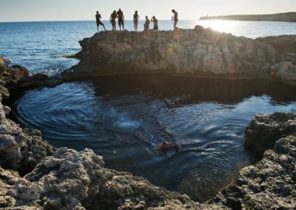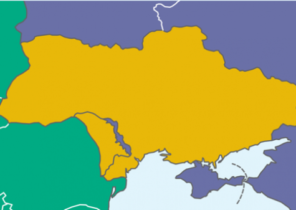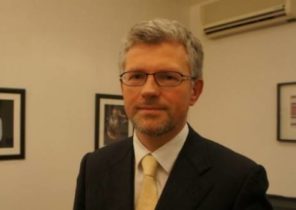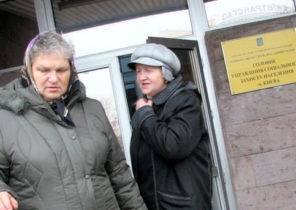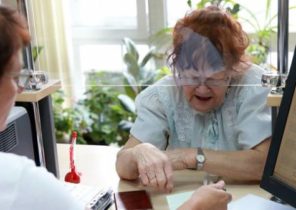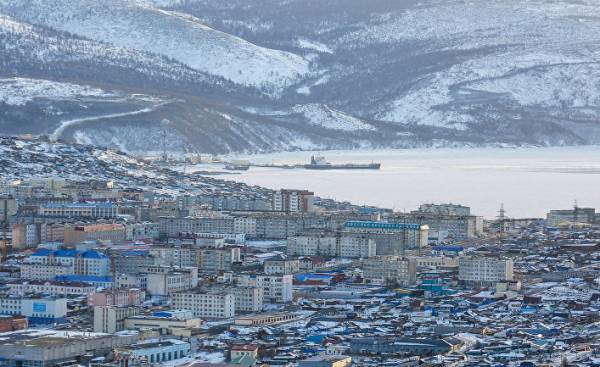
In the North-Eastern part of Siberia on the area called Kolyma, 1932-1956 years were the most horrible prison camps of Stalin’s Gulag archipelago. In the harsh natural conditions, worked hard 800 thousand people, and 130 thousand of them died — or, in camp parlance, “out on parole”.
Prisoners constructed the Kolyma highway. Thanks to the city of Magadan, located on the shore of the sea of Okhotsk, is still the most Eastern city of Russia, with which have road connections.
Magadan, with a population of 90 thousand inhabitants, situated on the shore of the sea of Okhotsk the centre of the Kolyma region and the only major city.
The name of Kolyma is consonant with the word Finnish “kuolema” − death.
January, and I’m going to go through the long two thousand kilometers of the road from Magadan to Yakutsk. I deliberately chose this month to at least a little to feel what the prisoners felt. The road crosses the northernmost permanent human habitation. The cold here can drop to minus 60 degrees.
On a trip I’m going alone and without a clear preliminary plans.
I know that there is a regular movement, more precisely, minibuses, but you will most likely pass a hitchhiker.
The biggest danger is the failure of transport. I took the warm change of clothes that I have. In an extreme case, here kindle the bonfires of tires.
First you have to meet with Magadan. The city was built by the prisoners, but he looks even attractive. Nothing new over the past 25 years, in addition to pompous Church was not.
Governor Vladimir Baked, the 67-year-old former teacher, takes in the administrative building of the Stalin era and answers questions in a pleasant baritone.
Kolyma refers to territories of Russia who suffer most from a declining population. It currently has less than 150 thousand people, i.e. one third of the population in Soviet times. The Governor is still optimistic: he believes that the population can increase by 20 thousand in ten years.
How can I do that? Attractive factor is still the same as during the existence of the camps: gold. Reserves of silver are the largest in Russia. Additional profit can bring oil. In the sea of Okhotsk is three oil deposits, test drilling is the Russian state company “Rosneft” through the Norwegian state oil company Statoil.
In Magadan I also meet a journalist who tells me to complete the picture of the city, after reviewing the information on the page vesma.today. For local journalists write about what you officially can not even stutter.
The web page explains how the Governor opened in the presence of TV cameras kindergarten, which is actually not working. And how the Archbishop of Magadan offended by the celebration on his subordinate and splashed his face with hot tea. The reason for this was that the national anthem penned by the Archbishop, was too quiet.
Magadan does not let go, but the Kolyma highway is calling to move on. I hop into the old bus “Ikarus” and shaking it to the first item on my itinerary of the Tent village with a population of 4.2 thousand people.
Not like a typical Soviet village.
The tiny village was subjected to an absurd change. The streets are decorated with lights in the shape of tulips and carnations, fountains and monuments. Multi-storey house newly painted, in every yard − brand new children’s Playground. In the city center there is a magnificent Church with its four-tiered iconostasis and the impressive frescoes.
Behind all this is rich in gold mining entrepreneur and local politician Alexander Basansky.
He isn’t your typical Russian billionaire. Most striking is its income — nearly 17 million euros. Striking is not even the sum itself, and the fact that he officially announces it in the Declaration, and thus, pays taxes with it.
Officially Basinski is considered to be the richest politician and civil servants in Russia. He lives in a normal apartment building in the center of the Tent. Well, maybe in his yard for a couple of artsy lamps more.
With a Finnish journalist Basansky to meet not time, but tonight I see him on the TV screen.
In the TV prizes gives himself Basinski: jewelry, phones and two of the Nissan Almera. He says unassumingly.
“It’s not like grandma is really too happy” − he commented the speech of the owner of the car.
The road cuts through snowy valleys. The Kolyma highway from a historical point of view is one of the most terrible roads of Russia, but she looks very beautiful — at least in the middle of winter, when the snow closes the course of rivers, dug in search of gold.
The minibus turns to the white mountains, where is a small village of Talaya. Here towering buildings built in the Stalin Empire style, decorated with columns.
The reason for their appearance is at a depth of three kilometers, where water shoots containing silicon, and the temperature reaches 90 degrees. Here the Soviet sanatorium, which can immediately bring in a list of protected objects of UNESCO, together with its staff.
I’ve always wanted to take a mud bath, and Melt I was able to do it. The dirt has got to the bottom of the nearest lake.
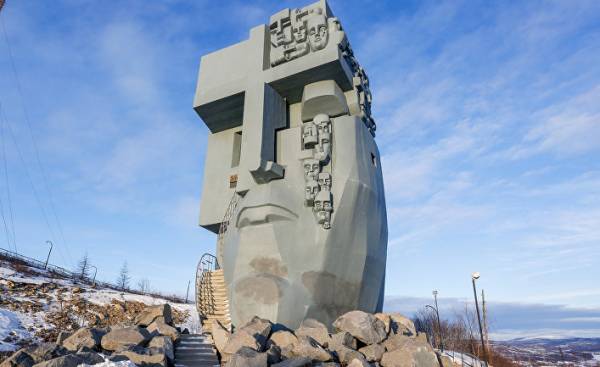 © RIA Novosti, Alexander | go to fotoballoon “Mask of sorrow” in Magadan
© RIA Novosti, Alexander | go to fotoballoon “Mask of sorrow” in Magadan
I undress and lie on a thick oilcloth. An employee of the resort puts on me of hot mud and wrapped in an oilcloth. In this condition, I sweat a quarter of an hour. After the procedure it becomes easy.
Life in the sanatorium is calm and measured — the schedule is even quiet hours from 14 to 16.
I could stay in the sanatorium for three weeks, like other campers, but I still have 1.7 thousand kilometers.
Dashing driver drives a minivan. We race past the villages, in houses which have no Windows. Schools and kindergartens deserted as Chernobyl. Nowhere in Russia there are so many Ghost towns as the Kolyma.
More specifically, Kolyma is not so deserted. Almost every abandoned village fight for survival to a few people.
In the abandoned village of Maldek from the walls of a multistory building sticking out of the pipe from which the smoke swirls. I go into this abandoned looking house and catch a 42-year-old Konstantin Trofimov for firing a coal stove.
He lives here with his father Valery since 1986, and seems in no hurry to leave. The reason for this is, of course, the Kolyma gold.
Trofimova — independent entrepreneurs, they have a bucket loader, a bulldozer and a device for washing gold. They are listed in the gold mining firm as prospectors ore.
By law, a private person in Russia can not engage in gold mining, but in practice it is washed in rivers of the Kolyma river by all who can.
In may, Maldek wakes up at that time here come hundreds hired by the mining firm of people from different corners of the former Soviet Union. Months later, they are engaged in heavy manual labor 12 hours a day, almost as much as did the prisoners in the camps.
“They come in the spring, leave here your health, but the following spring again ends,” − says Valery.
A couple of years ago Trofimova found in the near slope of a human skull. For their burial dug a grave and put a cross. Last summer, history repeated itself. In Mallace was one of the prison camps.
Most of the modern population of the Kolyma river has nothing to do with the past of the Gulag, because of their family came here later.
In the small town of Susuman I meet Hope Yemelyanov, the father of which was sent here in 1947. Only as an adult, my daughter began to ask him why she was born in Kolyma. Father until the end and did not tell the truth.
“The children knew the least. I only know that he raised the gold from the mine manually. A house in the Ukraine was gone, and Mama lived the whole winter in the dugout with my one-year-old older sister”.
Nothing like the Museum in Auschwitz on Russian Gulag will not find. From the labor camps there are very few, but of course, they remember here.
Michael Chibity created in Susuman “Memorial national Museum of Gulag” household goods store, which is owned by his mother-in-law. Every summer he wanders through the mountains and the forest, collecting scraps of barbed wire, rusty pans for washing gold and scraps of clothing.
We go with Subystem in the cemetery of the times of the Gulag, which is located outside the city. Bushes towering wooden poles, which knocked out the rooms. In the Gulag in the first place was a room.
Susuman with a population of five thousand people the impression of a terrible place. Frost reaches 50 degrees, the city closes a thick fog, humidity pulls a face. People make their way between dull houses, the dog digging in the garbage.
The city operates a gold mining company and the enterprise that runs the equipment the Toyota in severe cold conditions.
Many residents of Susuman are immigrants from Ukraine. It seems that all of them support Putin’s policy towards Ukraine and quarreled about it with their relatives living at home.
From Susuman to go hard. Ahead of the period of almost four hundred kilometers to Ust-Nera, located on the territory of Yakutia. Traffic little, minibuses do not go. The taxi driver agreed to try to drive for € 500.
To help me comes to the transportation of coal. Small towns are heated with coal, which is mined in the area. Travel by hitchhiking in Kolyma means not waiting on the side of the road with outstretched hand, and point selection in that moment, when the trucks carrying coal, together.
I took Sergey Kuzmich, who leads the Tatra truck was made in Czechoslovakia. My beige suitcase will not fit in the cabin, so the poet throws it into the trailer on a pile of coal.
In the next village I move the Volvo to Vladimir Affairs shumarova. On the way we render assistance to his colleague, who was having problem with the suspension spring of the trailer. Even metal can not withstand frost below 50 degrees.
Even a car damage the brake hose. Shumarov first aid, and the driver can again continue their journey. Here the drivers do not drive past all help each other. As they say, “in the mount podrezka fit.”
But it is better to be “on the mountain”, because the cold air on the Kolyma river descends into the valley. On the top of the pass the altitude in kilometers temperature reaches minus 37 degrees, while down below the frost goes down to minus 51.
A modest task Shumarova is the saving from freezing the coldest point of the planet, where people of Oymyakon.
It is situated in the pit 200 kilometers from the road. Single-lane road, they come across a rickety wooden bridges.
At the entrance of the bridge is to allow passage of vehicles with a maximum mass not exceeding 5 tonnes, but we carry 60 tons. Dangerous, but there is no choice.
“They need coal, and they are not interested, as we drove. Road service release ourselves from the responsibility of installing such signs. If anything happens, it will be the fault of the driver,” says Shumarov.
Oymyakon — a typical Yakut countryside: here are bred cattle and horses.
The mistress of my shelter, a local historian Tatyana Vasilyeva, has devoted his life to the protection of Oymyakon.
Oymyakon is fighting for the right to be called the coldest place of the Northern hemisphere with the town of Verkhoyansk, located in the Northern Yakutia. Vassiliev has proven that the record of the Verkhoyansk — 67.8 degrees below zero — was a misunderstanding and that in fact the documents had to be specified temperature of 67.1 degrees.
“The residents of Verkhoyansk wanted to prove it for the money. I one took to the barricades against the system and the cost of their health proved that we have here in Oimyakon colder. Now it’s recognized”, − said Vasilyev.
I have nothing against, but I at this pole of cold was not so good. The fever rose to 39 degrees.
The thermometer outside the window shows minus 56 degrees when I trudge to the outhouse. Naughty dog Vasilyeva’s trying to knock him down. At least I have a good feel, what is the temperature difference.
Oymyakon is now trying to benefit from its status as the coldest inhabited point of the earth. Each year they hold a festival “pole of cold” − but only at the end of March when it gets warmer. At the festival you can meet the local counterpart of the Finnish Joulupukki — Chishona.
“Welcome, welcome,” growls the man, dressed in a blue caftan and headpiece with horns.
The main work of a blacksmith Seeds Sivtseva in the area is to work with Chishona. His responsibilities include meeting, tourists, visiting schools and answering emails. Himself Cishan dreams about the official visit to Lapland to Joulupukki.
After the ceremonial photos Sivtsev quickly changes outfit Chishona on his own warm clothes.
From Oymyakon to Yakutsk route continues on the van. Along the way we save two women from freaking out on the side of the car and wait for three hours to have the car towed to the Motel.
In the Parking lot of the Motel are a snowmobile and a couple of deer. The hotel is called “Cuba”.


